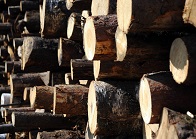Key Messages: Forests and Energy
Wood energy from the forest: a major source of the world’s renewable energy

Woodfuel provides 40% of today’s global renewable energy supply – as much as solar, hydroelectric and wind power combined.
About 50 percent of global wood production (around 1.86 billion cubic meters) is used as energy for cooking, heating, and electricity generation. For 2.4 billion people, woodfuel means a cooked and more nutritious meal, boiled water, and a warm dwelling.
Wood energy: powering economic development

Almost 900 million people, mostly in developing countries, are engaged in the wood-energy sector on a part- or full-time basis.
Modernizing the wood energy sector can help revitalize rural economies and stimulate enterprise development – greater investment in wood energy production and advanced wood fuels can provide revenue to finance better forest management, more growing forests and more jobs.
Wood and trees: optimal urban living and lower energy bills

Strategically placed trees in urban areas can cool the air by between 2-8 degrees C.
Wood energy: mitigating climate change and fostering sustainable development

Globally, forests hold an energy content approximately 10 times that of the world’s annual primary energy consumption. They thus have significant potential as renewable resources to meet global energy demand.
Forests for energy – now and in a future global green economy

Greater investment in technological innovation and in sustainably managed forests is the key to increasing forests’ role as a major source of renewable energy. In this way, we invest in our sustainable future, in meeting several Sustainable Development Goals and in growing a green economy.
Increased areas of sustainably household and community woodlots and the use of clean and efficient wood stoves can give millions more people in developing countries access to cheap, reliable and renewable energy.

